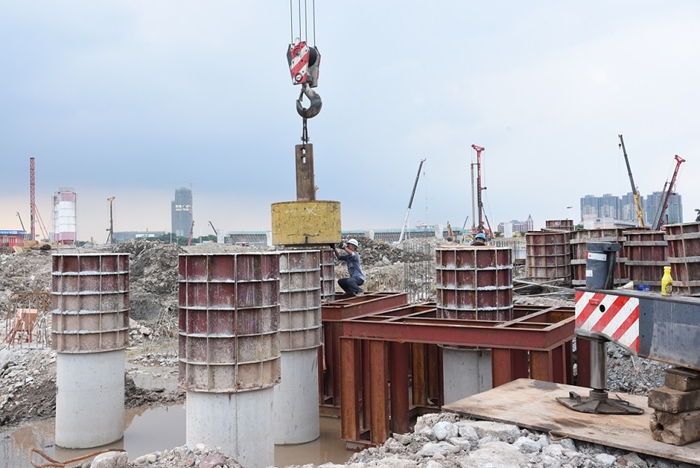 PDA site
PDA site1. Destruction of pile structure:
The bearing capacity of a pile is determined by two factors, one is the supporting capacity of the foundation soil on the pile; the other is the maximum axial load allowed by the strength of the pile body structure, and the small value of the two is used to control the bearing performance of the pile.
The dynamic test of high strain method solves the problem of the supporting capacity of the foundation soil to the pile, and assumes that the interface between the pile and the soil is damaged, and the allowable axial force of the pile structure strength cannot be evaluated.
2. Time effect:
The soil squeezing disturbance during the sinking process of the driven pile, the rise of saturated soil pore water pressure and the dissipation of time over time increase the effective soil stress and increase the bearing capacity of the pile. During the hole forming process of the cast-in-place pile, the soil on the hole wall is disturbed and the soil layer around the pile hardens, thereby increasing the pile side resistance. These changes with time and the bearing capacity of piles cannot be considered for dynamic test piles with high strain method and static load test piles. The only way is to test piles after a certain resting time after pile formation.
3. The negative friction resistance of the pile:
When the pile is in loose fill, self-weight collapsible loess, or under-consolidated soil; there is a soft soil layer around the pile, and there is a large area of pile load near the pile side; lowering the groundwater level increases the effective stress of the soil around the pile, resulting in Compression settlement, these conditions will cause the settlement of the soil around the pile to be greater than the settlement of the pile, and the soil will generate a downward load on the pile, which is called the negative friction resistance of the pile. The result of the high strain dynamic test pile cannot be evaluated.
4. Creep of soil:
Creep is one of the important engineering characteristics of soft soil. It is the study of the law of soil stress and strain changing with time. For soft soil, although the load is constant, the deformation develops with time. Another example is that the pile is in weathered bedrock or shale, and its strength decreases with time under constant load. The results of dynamic pile testing of these phenomena are unpredictable.
5. Sand liquefaction:
When the pile is in saturated sand or silt, under the action of seismic waves, the pore water pressure rises sharply, the effective stress of the soil decreases, the soil particles are in a suspended state, and the soil loses its strength, which is sand liquefaction. The dynamic test pile cannot predict the bearing capacity of the pile after sand liquefaction. The dynamic test pile may cause sand liquefaction after multiple hammers, and the signals of the first and second hammers should be selected as the analysis basis.
6. Pile foundation settlement:
For high-strain dynamic test piles and static load test piles, the load on the top of the pile is instantaneous and short-term, which cannot solve the long-term settlement of the pile and the pile group effect. For static load test piles with slow deformation of the Q-s curve, the ultimate bearing capacity of a single pile is determined according to the settlement of the pile top. Such pile dynamic test results have large errors.
7. Rock-socketed piles:
The bearing capacity of the rock-socketed pile is composed of the lateral resistance of the overlying soil layer, the friction force of the rock-socketed section and the end bearing force. Once the rock-socketed section is moved, the fixing force cannot be restored. Generally, the high-strain method is not suitable for dynamic test piles.
